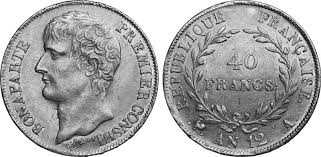The Age of Bimetallism saw many nations attempt to balance silver and gold as the foundation of their monetary systems. While the concept of using both metals as legal tender was not new, the 18th and 19th centuries marked a period when governments actively formalized bimetallic standards through legislation. Two of the most significant examples of this were France Monetary Law of 1803, which established a fixed silver-to-gold ratio in Europe, and the U.S. Coinage Act of 1792, which laid the groundwork for America’s early monetary system. These laws reflected the ambition of policymakers to create a stable, flexible financial system—yet they also revealed the inherent challenges of maintaining a bimetallic standard in the face of fluctuating global silver and gold prices.

The U.S. Coinage Act of 1792: Establishing American Bimetallism
- Background: A New Nation’s Monetary Challenge
- After the American Revolution, the newly formed United States faced the challenge of establishing a reliable and standardized currency system.
- The U.S. economy was largely dependent on foreign silver coins, particularly the Spanish dollar, which was widely used in trade.
- To create a stable monetary foundation, Congress passed the Coinage Act of 1792, which established a bimetallic standard for the country.
- Key Provisions of the Act
- The U.S. dollar was defined in terms of both silver and gold, making both metals legal tender.
- The law set a fixed exchange ratio of 15:1, meaning 15 ounces of silver were equivalent to 1 ounce of gold.
- The Act authorized the U.S. Mint to produce gold coins (Eagles), silver coins (Dollars, Half-Dollars, Quarters, and Dimes), and copper coins (Cents and Half-Cents) to facilitate trade and daily transactions.
- The government allowed free coinage, meaning individuals could bring raw silver or gold to the U.S. Mint to be converted into coins.
- Challenges and Unintended Consequences
- The market value of silver and gold fluctuated over time, often deviating from the fixed 15:1 ratio set by the law.
- By the early 19th century, gold became undervalued, leading to Gresham’s Law effects—where the more valuable metal (gold) was hoarded or exported, leaving only silver in circulation.
- Eventually, this imbalance led to the Coinage Act of 1834, which adjusted the silver-to-gold ratio to 16:1 to bring the system closer to market realities.
France’s Monetary Law of 1803: The Foundation of the Latin Monetary Union
- Napoleon’s Economic Reform
- In 1803, under the rule of Napoleon Bonaparte, France introduced a bimetallic system to stabilize its post-revolutionary economy.
- The Monetary Law of 1803 established a fixed silver-to-gold ratio of 15.5:1, meaning that 15.5 ounces of silver were legally equivalent to 1 ounce of gold.
- France’s system became one of the most influential bimetallic standards, later forming the basis of the Latin Monetary Union (LMU) in 1865.
- Why France’s System Worked (For a Time)
- France had significant silver reserves and strong trade ties, which helped maintain equilibrium between silver and gold.
- The 15.5:1 ratio was closer to global market conditions, making the system more sustainable than earlier bimetallic attempts.
- The French franc, based on this system, became one of the most stable European currencies in the 19th century.
- The Decline of France’s Bimetallic Standard
- As global silver production increased in the late 19th century (due to discoveries in the U.S. and Mexico), silver depreciated in value.
- The flood of cheap silver made it unprofitable to mint new silver coins under the fixed 15.5:1 ratio, causing silver to disappear from circulation.
- In 1873, France effectively abandoned bimetallism, aligning itself with the emerging gold standard that dominated the late 19th and early 20th centuries.
Comparing the Two Systems: Similarities and Differences
| Feature | U.S. Coinage Act of 1792 | France’s Monetary Law of 1803 |
|---|---|---|
| Fixed Silver-to-Gold Ratio | 15:1 | 15.5:1 |
| Legal Tender Metals | Silver & Gold | Silver & Gold |
| Primary Goal | Stabilize U.S. economy & create a national currency | Restore France’s monetary stability after the revolution |
| Challenges Faced | Market fluctuations caused gold to disappear | Increased global silver production devalued silver |
| Outcome | Adjusted in 1834; abandoned in 1873 | Helped create the Latin Monetary Union but was later abandoned in favor of gold |
The Global Impact of These Bimetallic Systems
- A Model for Other Nations
- The French and American bimetallic systems influenced many other countries, including those that later joined the Latin Monetary Union in 1865.
- The United States continued experimenting with bimetallism throughout the 19th century, leading to major political debates such as the Free Silver Movement of the 1890s.
- Lessons in Monetary Policy
- Both the U.S. and France’s experiences demonstrated the challenges of maintaining a fixed silver-to-gold ratio in a constantly shifting global economy.
- These cases reinforced the principle that market forces, rather than government mandates, often determine the true value of money.
- Transition to the Gold Standard
- Despite their initial success, both the U.S. and France eventually abandoned bimetallism, paving the way for the global gold standard that dominated the late 19th and early 20th centuries.
Conclusion: The Rise and Fall of Bimetallism
The U.S. Coinage Act of 1792 and France’s Monetary Law of 1803 were two of the most significant attempts to establish a stable bimetallic system. While they helped shape the financial policies of their respective nations, both systems ultimately faced the same fundamental challenge—the inability to control the fluctuating market values of silver and gold. Despite these difficulties, these laws laid the foundation for future monetary experiments and served as crucial stepping stones in the evolution of global financial systems.
